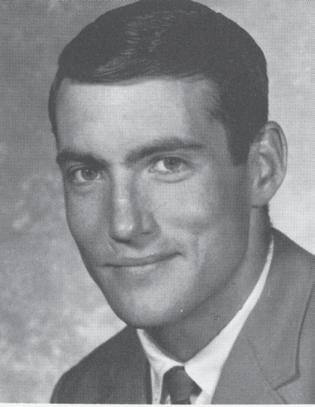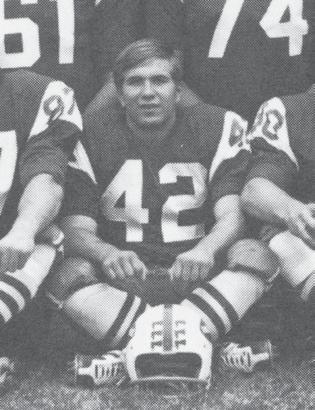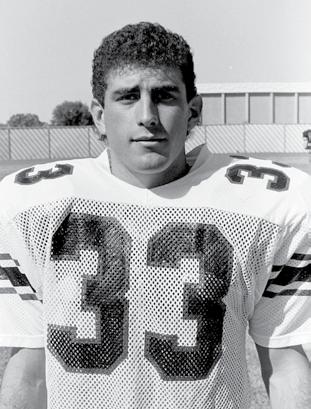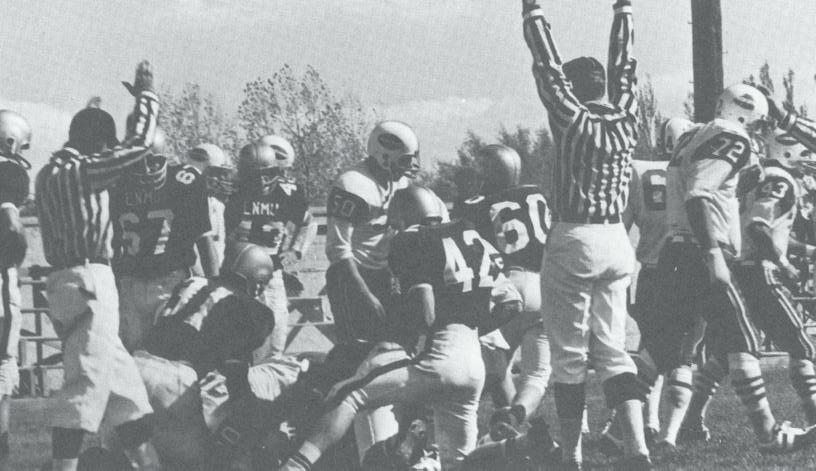
4 minute read
Great Alumni Story



Doctors from the Gridiron
Location, cost, and quality of academic programs consistently rank as primary reasons to attend Adams State, but the chance to compete in athletics has often provided a major impetus to matriculate at Adams State.
That aspiration brings scores of students to campus, allowing them to develop physically and mentally, to embody the epigram on the façade of Plachy Hall, “mens sana in corpore sano”—a sound mind in a sound body. So many student athletes, from heralded coach Joe Vigil, Ph.D., Class of 1959, to Doris Watson, Ph.D., Class of 1988 and 1990, now a professor at the University of Nevada, Las Vegas, found athletics at Adams State as entrances to splendid careers as terminally-qualified professionals. More than a few alumni came to Adams State to play football; in defiance of a persistent stereotype, their gridiron excellence not only led to athletic glory but stellar academic achievement. Intellectual phoenixes arising from the grind of summer camp and the mud and blood of brisk November afternoons, many of these football warriors became doctors from the gridiron.
Their intellectual destinations varied. Some, like defensive lineman Chris Cembalisty, D.C., Class of 1991, chose a healing profession. He’s now a doctor of chiropractic medicine in Grand Junction, Colorado. John Tooker, M.D., Class of 1966, grew up just south of Alamosa, and initially came to Adams because of location. He quickly attracted the attention of the track coaches because of his speed and the football coaches because of his height. He stands 6’ 4”. A chemistry major, he became one of the first Adams State graduates to attend medical school
One major reason for going to Adams State was to play football.” –Dr. David Hydock
It's Here! Adams100 History Book
Order by visiting adams.edu/alumni or call 719-587-8110
Extremely Limited Supply. Proceeds benefit the Alumni Scholarship, supporting legacy students of Adams State alumni.
before embarking on a long career in pulmonology. A native of New Jersey, William Rakow, Ph.D., Class of 1969, was recruited to play linebacker, but went on to earn a doctor of psychology degree before embarking on a long career as a therapist and school counselor.
Others became professors. A massive man, David Hydock, Ph.D., Class of 1995, came to Adams State to play offensive tackle. He now heads the School of Sport and Exercise Science at the University of Northern Colorado. Tom Bruscino, Ph.D., Class of 1999, trekked south from Highlands Ranch, Colorado, to play linebacker. He now serves as associate professor in the Department of Military Strategy, Planning, and Operations at the U.S. Army War College in Carlisle, Pa. After a brief stint at Colorado Mesa, Mark Manzanares, Ph.D., Class of 1989 and 1992 transferred to Adams State, subsequently earning a doctorate from Colorado State. A pioneer in on-line education at Adams State, he’s a longtime professor of counselor education. He remains the only person to score a touchdown both for and against Adams State.
Often, the initial human connection with Adams State was a coach and players’ conversations resonating, often reverently, with names like Vigil, McKillip, Carpenter, Buotac, Geiser, Schuett, and Norris. “They gave me a sense of belonging” at Adams State, Hydock recalls. Coaches recruited, mentored, and inspired their players, often becoming surrogate father figures, especially when players dealt with personal tragedies. Rakow’s father died of cancer while the young linebacker was two time zones away. And they modeled academic achievement as well. Coach “Geiser led the way,” earning his own doctorate while serving as head coach, Bruscino remembers powerfully.
Coaches were vital members of a larger team of professionals committed to student success. Players recall important intercessory roles played by college presidents, resident life personnel, and facilities service staff, such as “Boogie” Romero, because many footballers worked for facilities services. Mostly, gridiron doctors recall vital relationships with faculty in shaping their evolving sense of personal academic potential. Their reminiscences of Watkins, McAdow, McDaniel, Loser, Samora, Trujillo, Holmes, Foster, Kolupke, Crowther, and Dailey, among scores of others, attest to the vital role that professors play, helping athletes to see a future beyond maintaining eligibility and earning a degree, as important as those essential tasks are. Tooker “began to see the connection between science and the humanities” while taking a literature class. “A career in medicine became a possibility.” According to Hydock, “Dr. [Xingzhong] Li’s grammar and syntax courses taught me to think more scientifically, even though English as a major is not typically seen that way.”
Sometimes, the inspiration came from learning from a teacher about outstanding achievement of other alums who had not played sports. Hearing from Professor McDaniel that Gary Gallagher, Ph.D., Class of 1972, had obtained an endowed professorship at the University of Virginia, Bruscino believed he, too, could be a professor. “Because of . . . [ McDaniel’s] faith, guidance, and inspiration, I came to believe that I could follow in Gallagher’s footsteps.”
Professorial support took a variety of forms, recalls Manzanares. “No matter where I turned here at ASU there was a professor there to give me praise or a swift kick in the pants.” Supported in diverse ways by Adams State professionals, who inspired their achievement and long-term success, footballers became doctors from the gridiron. by Edward R. Crowther
Coach Carpenter recruited me and met with my father and me when we flew out to visit the
college.” –Dr. William Rakow Football brought me here, but it was the professors that kept me here.” –Dr. Mark Manzanares









